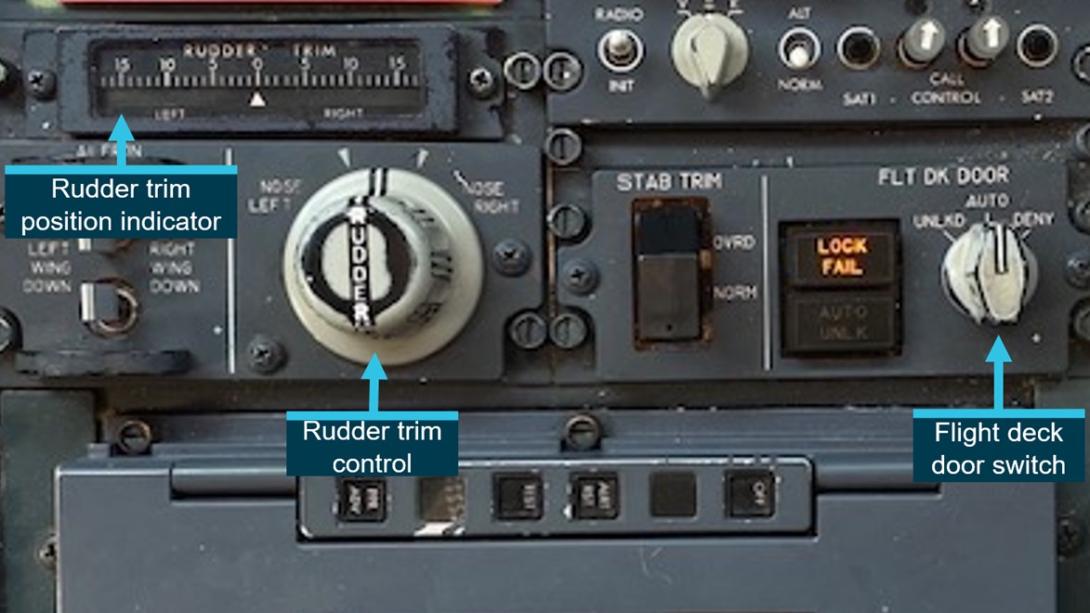
A pilot of a Virgin Australia Boeing 737 inadvertently input full left rudder trim when they intended to activate the flight deck door switch, resulting in an in-flight upset and a cabin crew member sustaining a minor injury, an ATSB investigation report details.
The incident occurred as the aircraft was approaching cruise altitude on a September 2023 flight from Brisbane to Melbourne, when the flight crew received a call from a cabin crew member requesting entry to the flight deck.
After completing security procedures, the captain, who was pilot monitoring, visually identified the flight deck door switch, then reached across to activate it.
“As they reached for the switch, the captain looked up from the switch to the flight deck door, and then inadvertently grasped and activated the rudder trim control instead,” ATSB Chief Commissioner Angus Mitchell said.
The two switches are similar in their operation and are situated close to each other on the flight deck aisle stand panel between the two pilot seats.
Initially, the autopilot countered the increasing left rudder trim’s resultant left yaw and induced left roll, with an opposing and increasing right wing down aileron input.
However, after about five seconds of full left rudder trim input, the autopilot reached the limit of its capacity to counteract it, and the aircraft began to increasingly roll to the left.
Identifying the uncommanded and increasing left roll and turn, the first officer, who was pilot flying, attempted to counter the turn – first with heading mode, which had no effect, and then by disconnecting the autopilot and manually applying almost full right aileron input to counter and then correct the left roll.
“After control of the aircraft had been regained, and the flight crew began to troubleshoot the situation, the pilot flying needed to hold about 35° of right wing down control wheel displacement to counter the induced roll caused by the rudder trim input,” Mr Mitchell said.
During this troubleshooting, the pilot monitoring checked the rudder trim indicator, identified the inadvertently applied trim, and applied right rudder trim to neutralise the rudder position.
The aircraft’s bank angle peaked at about 42° to the left, triggering a bank angle alert from the ground proximity warning system (GPWS), and a cabin crew member sustained a minor injury while stabilising a food service cart.
The aircraft continued to Melbourne without further incident.
Following the incident, Virgin Australia implemented changes to its flight deck door entry procedures, limiting the time required for the door unlock switch to be held. It also briefed flight crews on the event and changed its non-technical skills program in response.
“When selecting and activating any control or switch, it is critical flight crew ensure the intended control or switch is positively identified, and actually selected before being activated,” Mr Mitchell said.
“Further, it is important that any incidents like this one are reported to the operator, and subsequently to the manufacturer, as continuing record of such occurrences may indicate a design error that needs correcting.”
Read the report: In-flight upset involving Boeing 737-8FE, VH-YQR, 143 km west of Ballina/Byron Gateway Airport, New South Wales, on 6 September 2023


